The Toil of the Harvest: Saw Palmetto
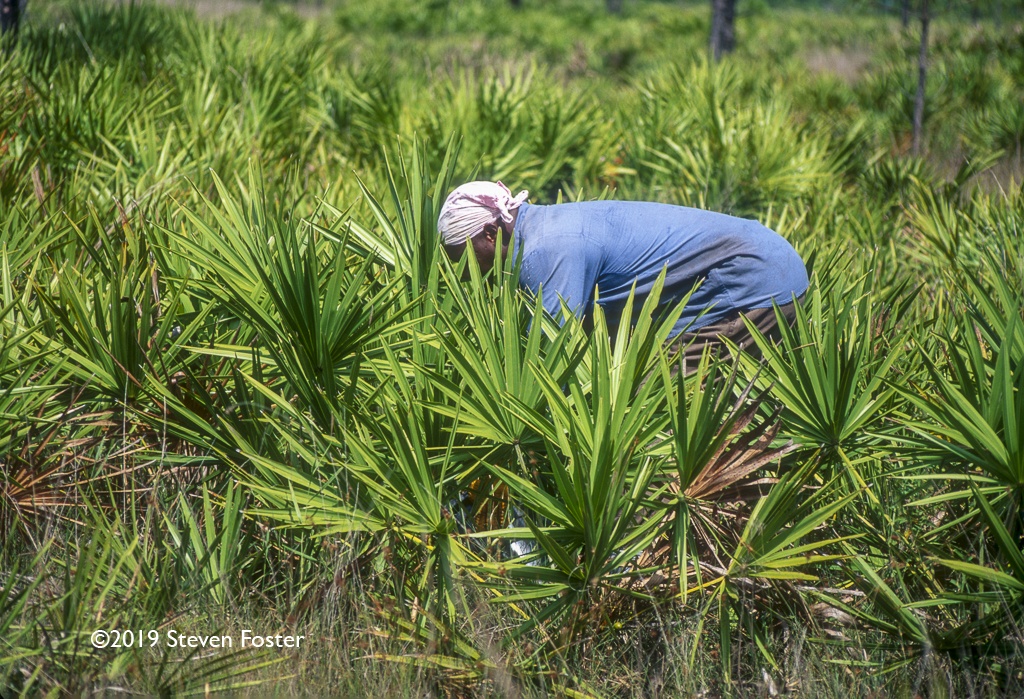
By Steven Foster
It’s one thing to be a farm laborer working from dawn to dusk, with the back-breaking, grueling job of hoeing a field, harvesting tomatoes, or hand-digging roots from a carefully cultivated herb plot. It’s quite another experience to harvest saw palmetto berries. Saw palmetto thickets cover millions of acres in Florida and adjacent Georgia. To call the saw palmetto harvest “wildcrafting” would be a little like calling coal mining “rock-sculpting.” Depending upon location, the harvest begins in the suffocating 95°F+ heat with steamy humidity to equal it under pounding hot Florida sunshine. This is not a day at the beach.
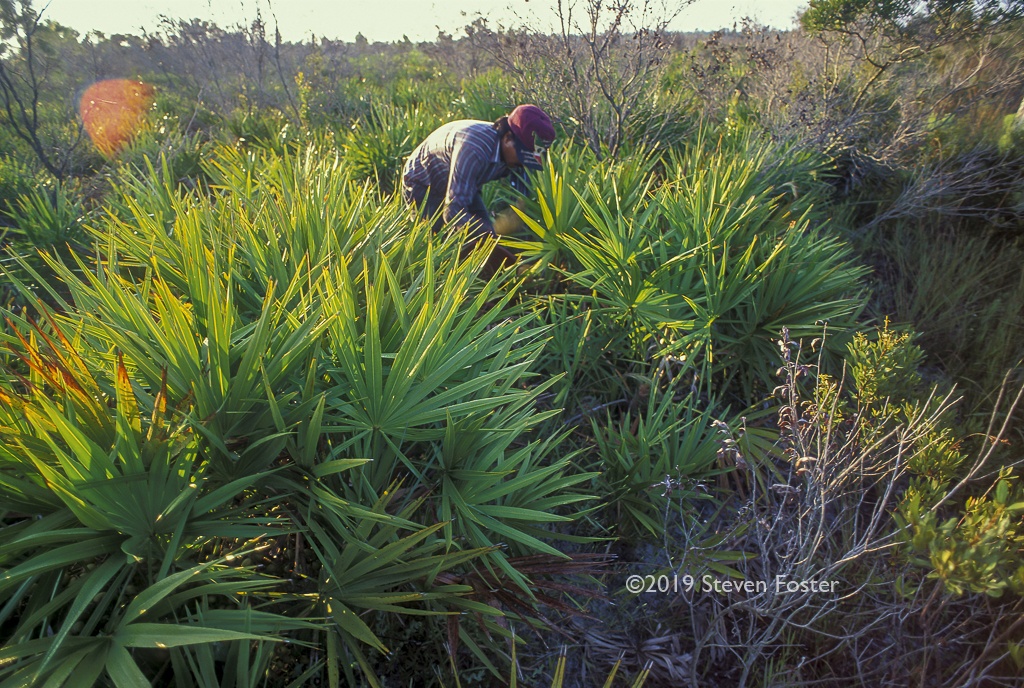
Picking saw palmetto berries. By Steven Foster.
The fruit is primarily harvested by migrant workers in August and September once the fruits begin to ripen after the tomato season has ended, often by workers from Caribbean Islands, Central America and Mexico. The workers call the fruit bolita. Harvesting the fruits is no easy task. The plant does not get the name “saw” palmetto for nothing. The leaf stalks are armed with saw-like teeth, and if you catch your clothes on them, you can tear them to shreds. The harvest is best done with heavy gloves to avoid getting cut by the sharp teeth on the leaf stalks. The fruits are tucked under the shrubs on large stalks. Thickets of saw palmetto can be completely impenetrable. If near water, there may be an alligator hiding in shallows. Beneath the shade and protection of the saw palmetto, eastern diamondback rattlers (Crotalus adamanteus) find their favorite home in the dry pine-palmetto thickets of Florida. This is a large, heavy-bodied, high venomous snake up to eight feet long and weighing up to 15 lbs. (rarely to over 30 lbs.), and has the longest fangs. Deaths from eastern diamondback bites to palmetto harvesters are reported.
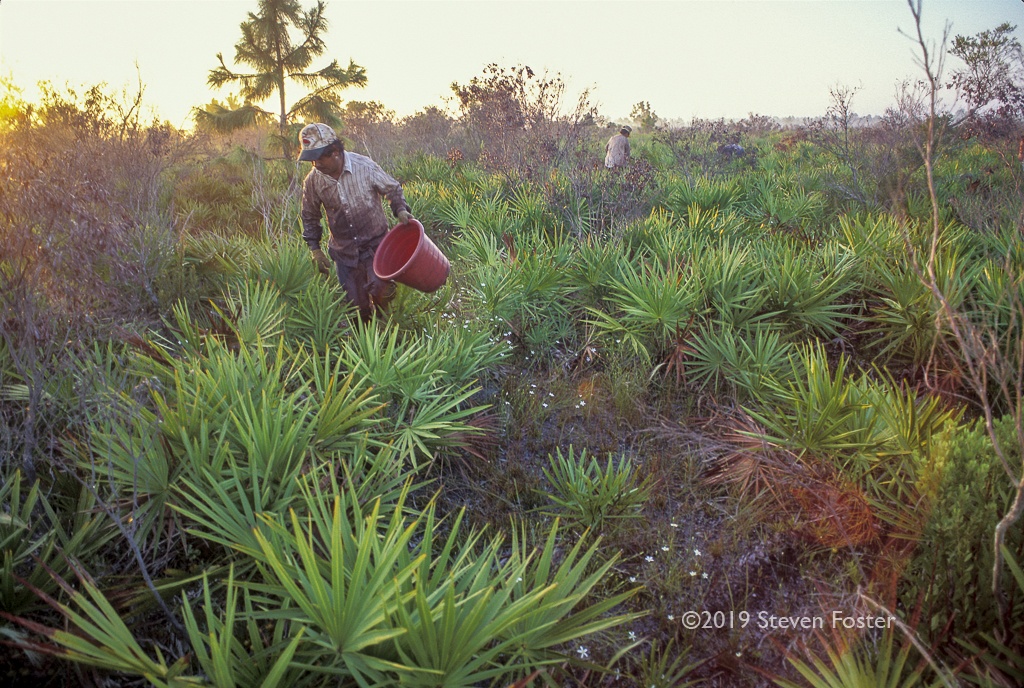
The hunt for ripe saw palmetto berries. Photo by Steven Foster.
Once the fruits completely ripen they soon drop to the ground, so generally they are harvested before completely shiny-black. They are characterized as “green ripe,” “orange ripe,” or “black ripe, depending upon the percentage of extractable solids. If harvested when too green (unripe), they make a highly inferior product. The fruits are dark and succulent, about the size of an olive, with large seeds within. They are very oily and have a peculiar fragrance that can only be described as saw palmetto-like. At first, the fruits produce a sweetish taste, but this is soon followed by a pungent, acrid sensation that spreads throughout the mouth and throat. If you’re around fresh bulk saw palmetto berries in the humid heat of harvest, the smell permeates your every pore. You smell it, you smell like it, and taste it with each breath.
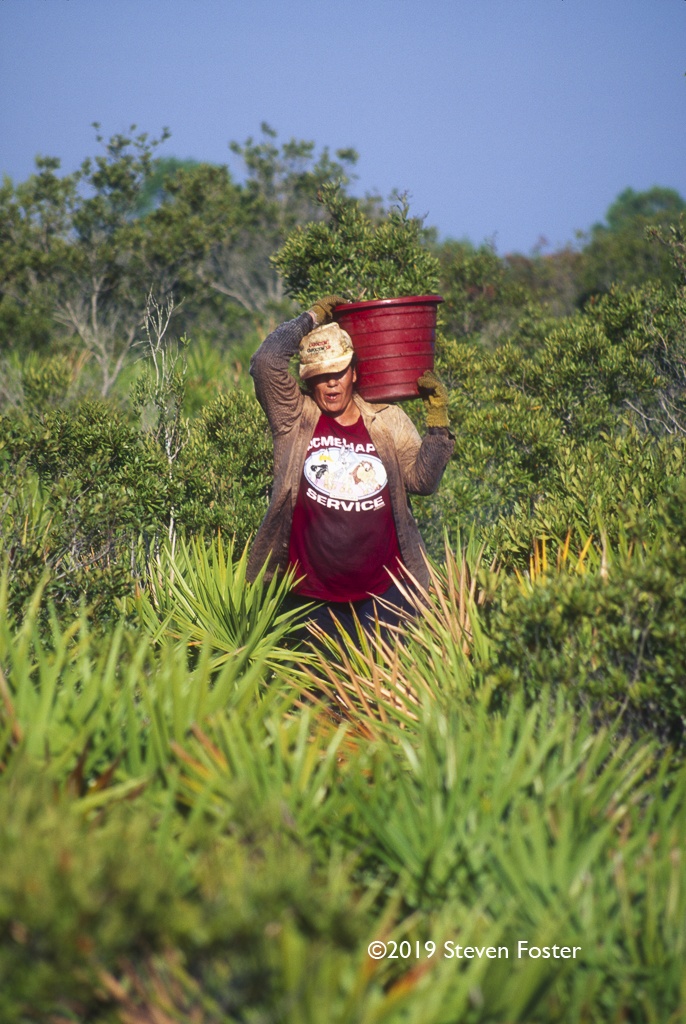
Hauling a full bucket of saw palmetto berries. Photo by Steven Foster.
One day in the mid 1990s during the saw palmetto berry harvest, I went out with a harvesting crew on a photo shoot. I met a crew of three pickers, and their crew chief at 4 a.m. We drove over 100 miles north of our meeting point to somewhere outside of Tampa, where the crew had staked-out a large thicket of palmetto berries not far from the coast where they had permission to harvest. The actual harvest of the berries commenced before sunrise. I had to use a flash to take my first set of pictures (back in the days of film). It was still dark. They had gallons of water with them to stay hydrated, and soon they were drenched with sweat and their clothes were stained with the dark oil of fresh palmetto berries. The work was hard, involving filling five gallon buckets with the fruits, and hauling them to feed sacks which were then dragged to the truck. The crew worked to about 11 a.m., getting a full pick-up load, about a half ton of the fresh berries. A half a day’s work, by any standards, equaled a day’s labor.
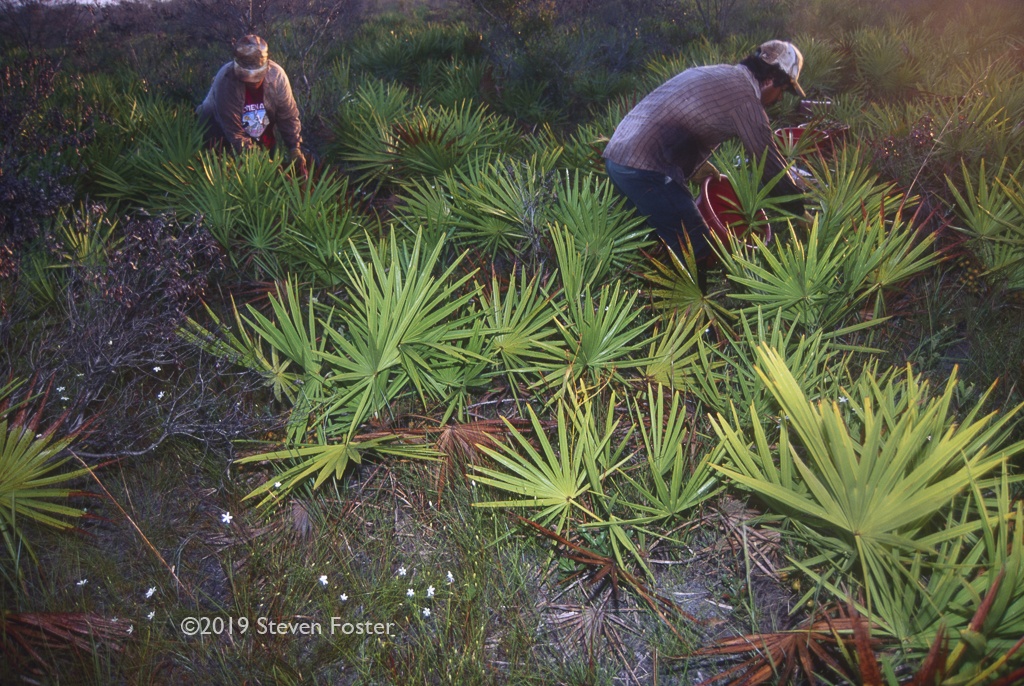
Picking saw palmetto berries before sunrise. Photo by Steven Foster.
When I first started going to Florida to see the saw palmetto harvest in the late 1980s and early 90s, saw palmetto pickers were making as little as eight to ten cents a pound. By the mid-1990s, supply shortages and increased demand pushed the price up to $3.00 a pound for fresh berries. The harvest season is short, depending upon location, usually about two weeks. The crew boss and the landowner also get a cut of the harvest. A typical berry picker can make upwards of $100 cash a day, depending upon the year. As of 2018, one must have a permit from the state of Florida and written permission from the landowner to be in possession of saw palmetto berries. The Florida Department of Agriculture and Consumer Services gave saw palmetto official status as of July 17, 2018 by putting it one the “Commercially Exploited Plant List.” Now that saw palmetto has value, the berry harvest isn’t as easy pickin’ for immigrant migrant farm workers. Picking the berries can be a crime that can get you deported. More on these and other aspects of saw palmetto sustainability issues in upcoming posts and pages.

Thank you for the information.
Hi! I am a young entrepreneur of the north Mexico. I woul like to import some seeds of Saw palmetto to introduce and growth on my ranch. You know who is selling seedling?
I’m afraid I don’t!I have passed your name/contact on to someone who may know and have asked him to contact you if he does. Good luck!
We are looking for pharmaceutical/labs in need of purchasing Saw Palmeto berries. We harvest and can also deliver them in any processed stage as needed.
@jose Perez if your series email me and let’s talk business
Does the season start on July 1, 2023?
Hi… is it possible to purchase seeds to grow and to purchase berries to make medicine for my personal apothecary?